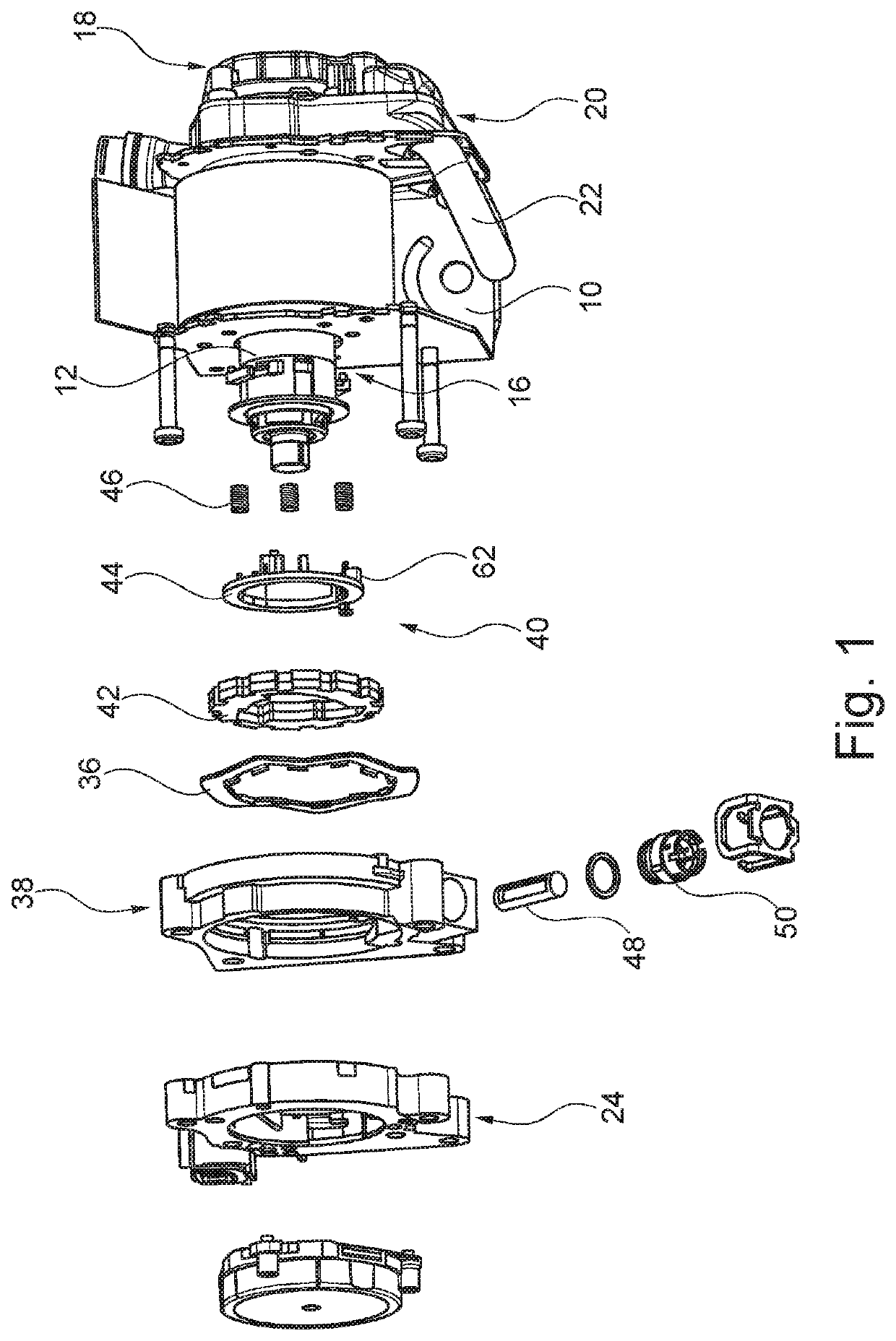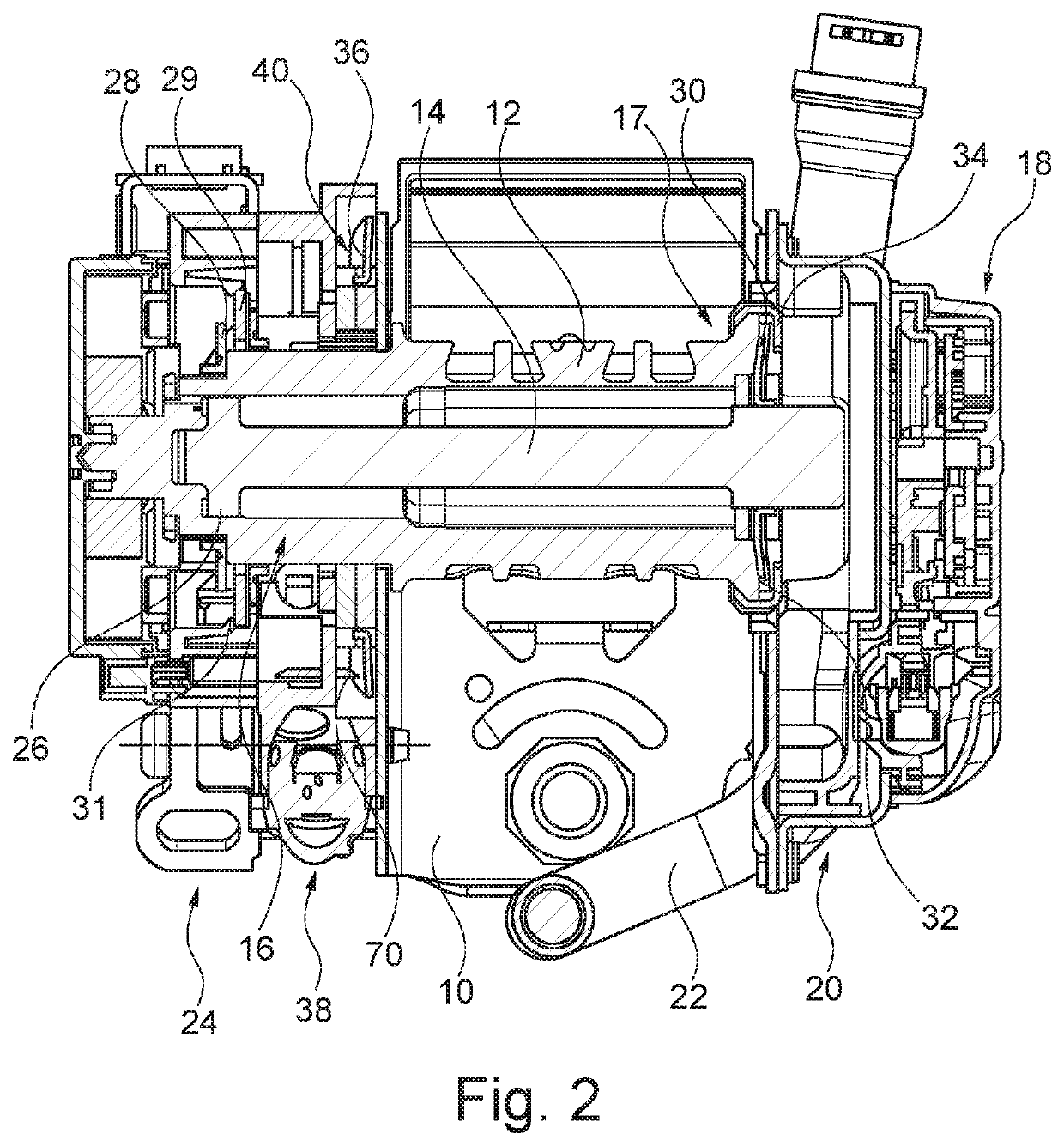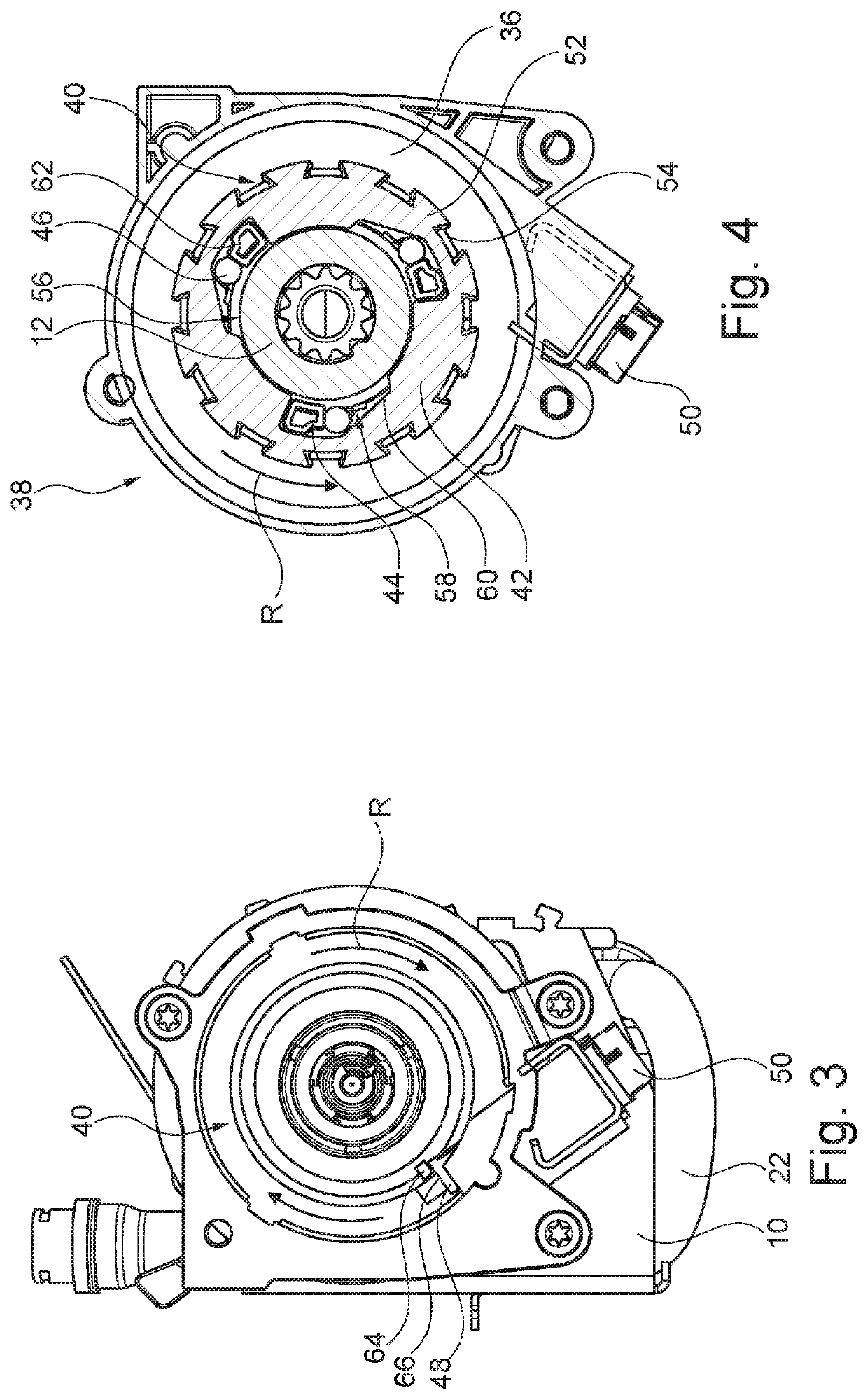Seatbelt retractor and method for controlling a seatbelt retractor
- Summary
- Abstract
- Description
- Claims
- Application Information
AI Technical Summary
Benefits of technology
Problems solved by technology
Method used
Image
Examples
Example
[0041]By way of FIGS. 1 and 2, the general structure of the belt retractor is initially illustrated.
[0042]The belt retractor includes a frame 10 as self-supporting component in which a belt reel 12 is arranged.
[0043]A torsion rod 14 which is the core component of a first load limiter extends through the belt retractor. The torsion rod 14 is assigned to the belt reel 12 at a first end 16 and is received in a hub (not shown) at the opposite second end 17 in a rotationally fixed manner. At the hub there is arranged a blocking mechanism 18 not described in detail here which serves for blocking the hub and thus the torsion rod 14 relative to the frame 10 in a rotationally fixed manner where needed.
[0044]The first end 16 of the belt reel 12 is formed by the entire portion of the belt reel 12 which extends away from the frame 10 in the axial direction (to the left in the figure).
[0045]Also, a drive unit 20 which may comprise a so-called pre-tensioner, e.g. an electric motor, and a main ten...
PUM
 Login to View More
Login to View More Abstract
Description
Claims
Application Information
 Login to View More
Login to View More - R&D
- Intellectual Property
- Life Sciences
- Materials
- Tech Scout
- Unparalleled Data Quality
- Higher Quality Content
- 60% Fewer Hallucinations
Browse by: Latest US Patents, China's latest patents, Technical Efficacy Thesaurus, Application Domain, Technology Topic, Popular Technical Reports.
© 2025 PatSnap. All rights reserved.Legal|Privacy policy|Modern Slavery Act Transparency Statement|Sitemap|About US| Contact US: help@patsnap.com



